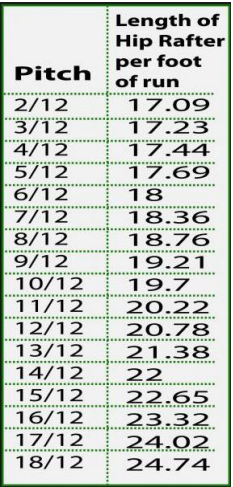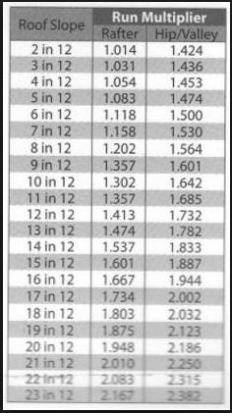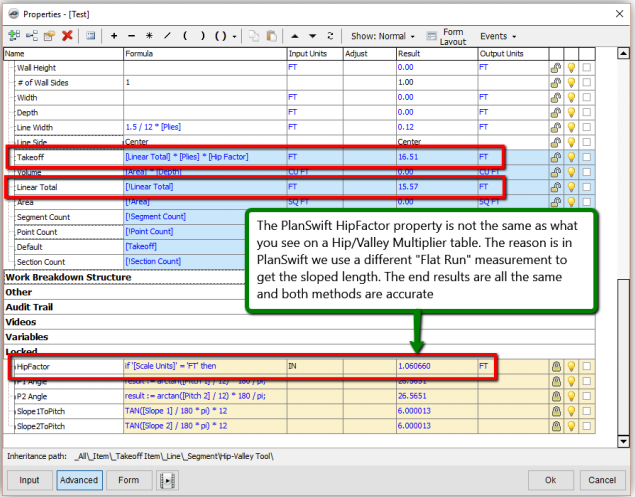To open any link in a new tab, preserving your position in the current article, just hold down the <CTRL> key on your keyboard before clicking the link or click using your mouse wheel.
PlanSwift’s Hip-Valley Tool Calculations
How it works and why it uses a different method
Occasionally, we get customers calling us a little confused about the Hip/Valley tool inside of PlanSwift, so we are providing this document to help clarify how we calculate hips and valleys and assure our customers that the calculations and the math behind the calculations are completely accurate.
PlanSwift uses a different Flat Run dimension to measure the hip or valley, and therefore we use a different multiplier to calculate the actual sloped length of the hip or valley.
If you are familiar with framing tables and tools, those tables will have a Hip/Valley Run Multiplier, or some tables will actually display the full number as it pertains to each foot of run. Here are some examples of some tables we found online:
These two tables utilize a Flat Run measurement that is perpendicular to one of the side walls and runs to the peak of the hip or valley.
PlanSwift does not utilize a Flat Run measurement that is perpendicular, but, rather, our Flat Run for the hip or valley is directly over the hip or valley and is measured in that manner. Here are a few more images to help clarify the difference:
Here is the math on each method for you to see it in action: For the old-school table method:
The hip we are measuring in the image above is 11 feet from the wall when taking the perpendicular measurement from the wall along the “Flat Run”. With a 6/12 roof pitch, we have: 11 feet, times the 1.5 multiplier from the table, which equals 16.5 feet. Here is what goes into the calculator: 11 x 1.5 = 16.5.
For the PlanSwift Hip-Valley Tool method:
The hip we are measuring is 15.57 feet when measured directly over the hip along the “Flat Run”. With a 6/12 roof pitch, we have: 15.57 feet, times 1.060660 (the PlanSwift HipFactor), which equals 16.51 feet. Here is exactly how PlanSwift calculates this: 15.57 x 1.060660 = 16.51.
Note, the results may be a few hundredths different depending on how accurately the user measures the Flat Run for each different method. The math is accurate as long as the initial Flat Run measurements are done correctly and consistently for each method. For users who are concerned about this difference in results, they can always adjust the exact length of the Flat Run until the results for each method match exactly the same. In short, you needn't worry about it, the math is correct.
Copyright 2023 ConstructConnect



